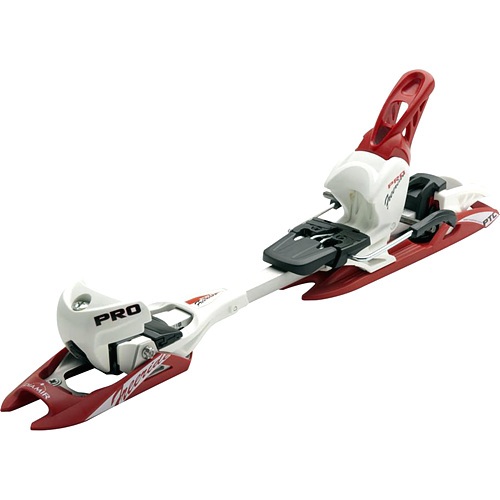
Holder
Perhaps the most impressive aspect of mountain-climbing skiing is wearing a board and going down the hill. The three different types of equipment that can be used to go uphill are different from alpine skiing: skid-straps, retainers, snow boots for walking, climbing and walking, and snowboards should be affixed with anti-slide belts, and the anti-slide belts should be glued under the skis on one side. On the other side, like velvet, there is friction in only one direction. People wear snowboards with sliding belts, and the snowboards do not skid when facing down the hill, but it is not difficult to lift them up. This way, walking on the snow is as easy as walking on the road. The English name of the anti-slip belt is skin, probably because the original anti-slip belt was made of animal skin. If you change from walking to sliding, you must remove the anti-slide belt and put it in your bag (or hang it around your neck if you want to save a few seconds while participating in the game). When a person climbs or walks, the heel lifts naturally. For this reason, people have invented a special mountaineering ski fixation device to connect the snow boots and the snowboard so that when each step is taken, the front plate of the person is connected with the plate through a shaft to drive the plate. Go forward, but boots can be lifted.

Slide belt
For this reason, people also invented two kinds of skiing methods. One is to ski the Alpine Touring (AT or rando), which is fixed on the heel, and the other is the Telemark (translation) slide method. We mainly introduce AT equipment here and only introduce Telemark in the final.
The AT holder can be opened after walking, and can support the heel of the person to keep the level of the foot when climbing, greatly reducing fatigue, and almost as comfortable as going up stairs. When skiing, the AT holder can be buckled behind and slides like an alpine ski holder. It also releases when it falls, avoiding injury. A well-designed fixture will move the front axis forward to the foot, making the walking pace more natural. The most important fixture development in the last 20 years is the Dynafit's fixture. The advantage is that it is ultra-light, the front axle is closer to the sole of the foot, the fault has a special interface on the shoe, and the upper board is more troublesome (the figure below shows the DynafitTLTSpeed ​​fixture for walking, including Snow-claw and ski lifts that have been snapped into the front axle can lift the heel.) Finally, the difference between AT equipment and alpine skiing is snow boots. You may have noticed that the ordinary alpine snowshoe is under a plastic flat bottom. This bottom is too unsafe for hiking, and a steep place where a slipper does not know where to drop, so the ski boots have arc rubber low Shoes to increase friction. Boots generally have two states of "walking" and "skiing", which have been transformed by one mechanism. When adjusted to a walking state, the ankles of the boot can move the lower back and forth so that the foot can be lifted freely, making it easier to move; when adjusted to a ski state, the boot's ankle can be completely fixed like an alpine ski boot, allowing the leg's strength Pass the boots directly to the board. AT boots are generally softer and lighter.
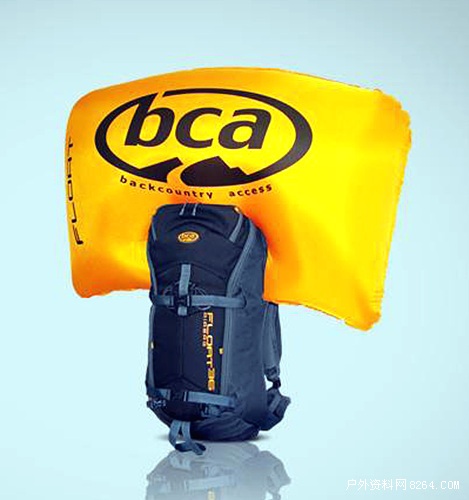
Anti-Avalanche Backpack
In addition to the above major equipment, the length of the pole is generally adjustable (uphill is shorter), the upper snow is larger (3/4 of the BD is better designed), and the tightest mechanism after the pole adjustment Good is the fliplock of BD and Gipron instead of the common tightening type. With respect to the slip zone, the width is narrower than the plate, leaving a few millimeters for the edge of the plate on both sides, and a full-length one needs to be used for climbing over 20 degrees. Nylon's anti-slippery belt is relatively long-lived, Mohair's hair is less absorbent, and its gliding and anti-icing properties are relatively good. The long line is recommended to bring skid-strap rubber and de-icing and other maintenance products and anti-snow snow snow wax. All calibrators can be equipped with snow claws (similar to the climbing claws), and they are essential when crossing steep slopes in hard snow or on steep slopes that are frozen. The brake on the retainer can stop the board after the board is dropped, but it is recommended to use a tie rope to tie the board to the legs to reduce the possibility of losing the board in powder snow, but pay attention to increase the safety tie rope in the avalanche. Should be able to pull off. Snow mirrors or sunglasses should be backed up. Snow mirrors can be created in just a few hours after losing snow mirrors (though the attack may be the next day). Ordinary ski helmets affect hearing and have an impact on team members’ communication during mountain climbing.
For those snow lovers who are not satisfied with these popular words, we use the classification of tetongravity.com to perform class analysis according to the general ideas for the 0% to 100% of all levels of demand and equipment. Note that the equipment mentioned below, especially the snowboard, is mainly for example and is not necessarily the most recommended. Everyone's requirements are different. It is more important to read why you read than what you read.
Roadside awe-inspiring: 10% for ascent and 90% for declining “Roadside†skiers are those who are slippery on ski slopes. After the cable car rides to the top, it still has to carry the board. With less rocks, slippery (spring) areas, and snow that can't kick your feet, you can go to places where there are no snow tracks to slip into fresher, more shaded, steeper, and quieter places. Roadside skiers need rubber soles. Hopefully, the shoes must be as hard as regular snow boots, and they can drive long, wide planks precisely. This shoe is no different from the ordinary alpine ski boots except for the bottom. The hardness is above 100, and some of them do not even have the "walking mode" (see above) that has become popular in recent years. Representatives of the shoes are Shaman of Garmont, Astral, Hurricane of Scarpa. The roadside people's snowboards also do not consider the weight (because it is always a cable car ride) and only consider performance. According to preference, if there is still a need to slide on the slopes, then the board will use thin waist plates that are biased toward the “big head boardâ€. If the pursuit of powder snow, the board should be wide. In order to match the rubber sole of the shoe, the skis need to be equipped with mountaineering ski holders, and the most suitable are the most powerful and powerful fixtures, such as Marker (only for wide panels) and Fritschi's Diamir FreeRide Plus. It is also possible to climb with ordinary alpine skiing equipment plus a converter. Then mention that AlpineTrekker can use the ordinary alpine ski equipment with sliding belt for climbing.
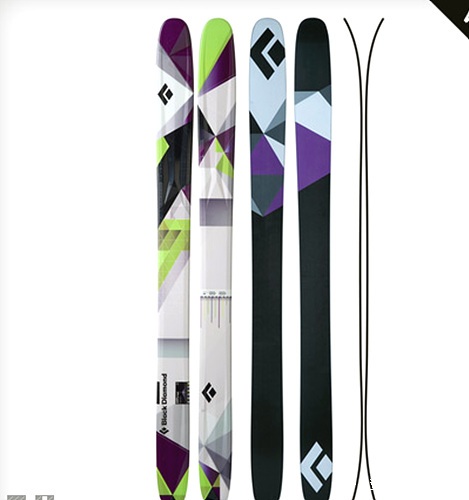
Ski board
Wild snow day: 20% for rising, 80% for falling For those who want snow conditions to spend a day in the mountains wild snow free wild, play freeride, but usually want to spend a lot of time on the slopes of the people to come Says that the climbing comfort of the shoe should be considered more. In general, people go to slide wild snow because they want to slip the snow, it is best to just snow. It is said that this kind of soft white powder is just as addictive as some other kind of white powder. The shoes that slide on this snow and the snowboard are softer and more appropriate, so the mountaineering skis are generally softer than the snowboards, and they are not as stable as the specialized snowboards at high speeds. Skiing is generally required for backpacking (at least clothing, food, water, and avalanche rescue equipment) because the temperature changes encountered at different altitudes, at different times, and in different weathers need to be dealt with. Snow shells, ice surfaces, and thick shaved ice (concrete) must be dealt with. As thick as the snow, your snowboard may need a shorter board (lighter, easier to control, from the woods), slightly wider but no more than 85mm, otherwise the performance on the slope will be affected. . There is a wide selection of boards, and there are dozens of new All-Mountain boards, so long as it's not just the race boards and super-light boards that have reasons for selection, it's purely about what you focus on. If you only want to buy a pair of shoes for AT and Snow Ski, and you know that no matter how much AT will not be more than a full day, then the hardness between 90-85, the shoes with full walking mode may be the best for you . This type of shoe is now the hardest (thus also the most hard to handle ski slopes) full-featured AT shoes, walking is not very comfortable but make do for a day. Harder (90) Typhoon/Skookum with Scarpa, Endorphin from Garmont, Axon, AeroFreeride (4 buckles) from Dynafit (85 hardness) Tornado with Scarpa, Spirit4 (with black tongue), Adrenaline from Garmont Dynafit's ZZeus (this is the world's first shoe for all AT and alpine retainers), Zzero CF4 buckle, and Ellipsee2 of Salomon.
Holders are available in a variety of brands, but the more solid Fritschi (the most popular FreeRide), Garmont's Silveretta several classic holder is better. For skaters with high quality requirements, these two additional benefits are that you can use your own alpine snowshoe on the fixture to ensure it is secure and secure (Naxo's can also). note! For holders and shoes, AT and alpine ski equipment can not be mixed casually, because the AT sole is rubber, stuck in the holder than the plastic bottom of the mountain shoes to friction, the holder will open at different strengths, not It may make you break your knee.
For interest or for work: 35% for rising, 65% for falling If you feel that your hobby for skiing is more than the occasional one, you see a snow slope and start thinking seriously Sliding down, you have higher requirements for the uphill performance of the equipment, but the downhill performance is still dominant (this is especially suitable for professional guides and patrols in foreign big ski resorts), if you plan to buy a set of AT equipment (but only To sell a set), then you have to consider the hardness of the shoes is 80-75, the ski performance of these shoes comparable to the snow shoes, but at the same time light enough for you to enjoy AT a day or two. Because you have to think about the contents of your backpack, including not only spares, food, and ambulance supplies, but sometimes even downhill seat belts and ropes, all kinds of ski equipment must be lightweight. In terms of fixtures, Fritschi's Explore and Naxo's fixtures are only 1.6-1.8kg, which is a lot lighter than the 2kg more "iron shovel" on the mountain plate, but compared to Dynafit's TLT series (0.68-1kg) ) But it seems heavy again. Dynafit's fixator can't completely occupy the market because it needs a special binding device on the shoe. Not only can the alpine ski boots not work, but many AT shoes can't be used. If you put the slide in an important position of 65%, it is very likely that it will be important to pick a pair of shoes that are a few hundred grams below the foot. Suitable hardness shoes include Scarpa's classic Denali XT/TT with 80 durometers, the new Spirit4 (green tongue), Rodeo/Pro for Lowa Struktura, Zzero PX4 (4 buckles) for Dynafit, and Spirit3 for Scarpa with 75 durometers, and Gargard's Megaride/ G-Ride, Evo of Lowa Struktura, AeroSpeed ​​(3 buckles) and ZzeroCF3 (3 buckles) from Dynafit. Note that Dynafit's shoes not only have 3 buckles and 4 buckles, but also different shell materials: the standard CF is a very hard carbon fiber, PX is a slightly softer plastic (known as the world's lightest 4 buckle AT shoes, 3.18 A pair of kg is lighter than the other brands (400 g - 1 kg), and the red U is the hardest, which is in cold weather. Your snowboard is almost the same as the starting point of a level board, but you will be more willing to sacrifice the performance on the snow track and choose a board optimized for AT. The board may not exceed 4kg (a pair of weights). Basically, the waist below 72mm is not taken into consideration, and 100mm or more is not unusual, but wide boards often mean deeper and larger turning radius. At this level, avalanche safety is an issue that you can't avoid because you will face snow slopes that are far away from foreign aid. You must be familiar with the conditions of an avalanche, bring avalanche beacons, probes, snow shovels, and learn to use them. Layered clothing that is waterproof and warm, navigational maps in the mountains, compasses, GPS, etc. are all more reliable than the previous level. Tools for repairing ski equipment and necessary accessories (including spare sunglasses) are also essential. It takes a few hours to go skiing and it may take a day or two to take a hike (do you have enough spare food?).
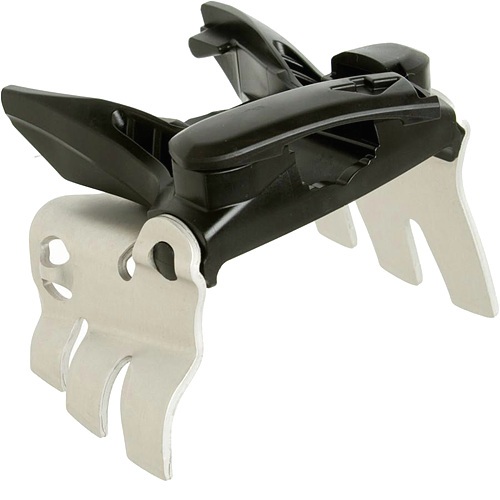
Snowboard crampons
In some places, there are no snowboards to move on. No one can climb or ski: 50% for climbing, 50% for falling. If you are equally passionate about climbing and skiing, you can enjoy different pleasures of climbing and skiing. You are willing to carry a backpack on your fifth day. Traversing, but also reveling in the senior road of the ski resort One by one, from morning to night, you not only want to go to European HauteRoute for 10 days (For people who don't know, HauteRoute is from Chamonix, France to Zama, Switzerland Special long-distance mountaineering and skiing routes, which pass several mountain passes and glaciers with a height difference of several kilometers, and also want to slide the Qinghai-Tibet Plateau and the glaciers and snow slopes in Xinjiang, then you should consider the same equipment with good climbing and skiing performance, and the equipment is light. Quantification is an important goal of your selection. The performance on the slope is already an irrelevant topic. Your equipment is the most representative of the features of mountaineering skiing. Just as hiking and long-distance hiking require, you must first choose your shoes (readers can find this article is the most important thing is placed on the shoes), shoes should fit comfortable, lighter, more than a pound on the foot is equal to the back Back 5 pounds, while the shoes are generally relatively soft, hardness 70 Scarpa Matrix, Dynafit's TLT700, hardness 60 Scarpa's Laser, Garmont's Dynamite, Helium, Dynafit's TLT500 (plus tape), Scarpa's F3 and so on. The fixture can be used with Dynafit. If the shoe does not allow it, consider Fritschi's Explore, Silvretta's Pure Series (~1kg). It's worth mentioning that Naxo's special front axle design makes walking in the flats a very natural fit. For the climb less than 2km above the peak, the board should be light, but not necessarily lighter than the limit. There are many kinds of 2.5-3.5kg (one pair), large open snowfields and variable snow quality. It is required to balance the stability between the snowboard (short board, small radius) and speed (long board length, large radius) according to own technology and physical strength. Whenever possible, choose a wider plate. The more balanced boards are Dynastar's Altitrail Vertical, AltitrailPowder, K2's Shuksan, 8611, Völkl's Mountain, SnowWolf, and the wider K2's MtBaker Superlight (88mm). If your goal is to climb up and down the high altitudes, see the ultralight panels designed for climbers below. Finally, the tail of the snowboard should not be tilted, because it is sometimes necessary to insert the tail into the snow to make the anchor point. If you need to wear a snowboard to climb for several days, want to climb the snowboard and climb down the top of the 7000-8000 peak, then in order to deal with the expedition climbing and climbing at high altitude and oxygen deficiency, various manufacturers have produced ultra light panels, such as 73mm Waist width (easy to turn on a steep slope) of Gasherbrum II (2.6kg) for Dynafit, Atomic's Climber (2.4kg), TAExpedition (2.3kg) for Blizzard, and Seyenfit's Se7enSummit (2.8kg) for 78-79mm waist width, DynafitLegend8000 (2.7kg), Dynafit MustaghAta (3.2kg) with 86mm waist width (easy to float on soft snow). This kind of fixture is not Dynafit's kind of light. At this level, safety issues are an imminent event. In addition to the safety measures to be provided at the next level, at least one person in the team knows under what conditions the risk of avalanche is high. Everyone on the team must bring avalanche rescue equipment, and All are guaranteed to be used before departure. At least half of the people need to know how to navigate, find a place to camp, cook, and if they are on a glacier, they need to know ice-streak rescue techniques and equipment (knots, necessary iron locks, seat belts, and helmets). These are very high demands and far exceed the scope of the average skier. It is recommended that beginners and experienced people learn, and mistakes can be very costly.
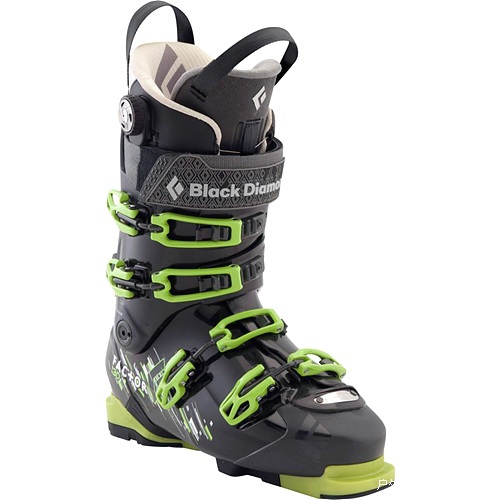
Snowshoe
Climber's Tools: 70% for Ascent, 30% for Falling Climbers Use the mountaineering ski equipment to climb from the snow surface towards the goal of winter climbing, reach the foot of the mountain or climb the hill, thus avoiding the waist in the waist Open roads, ski equipment can also provide some additional entertainment down the mountain, while allowing climbers do not have to face the endless downhill long road, or escape the impending bad weather, quickly return to camp or parking lot. In addition, when the snowboard is worn on a glacier, it is scattered and it is less likely to fall into hidden ice cracks than on foot. The first thing a climber needs to think about in the mountains is climbing: how to go uphill and downhill safely, happily and efficiently. All those who have climbed in deep snow have agreed to go after climbing with ski equipment and climbing on thick snow (the heel is still!) is absolutely enjoyable. For equipment, climbers are required to be as light as possible. Ski performance is not important, because they actually carry heavy mountaineering bags and tie ropes (when the snow bridge is thin on the glacier). They are less likely to ski, and sometimes they can basically Not falling down is already good. Boots must be easy to walk. They can walk long distances with snowboards. They are not only light and soft, but they can also be used for rock climbing after taking off the skis, and they can reliably wear climbing crampons. The hardness of these boots is around 50, including Scarpa's F1, Garmont's Megalete, Dynafit's TLT4Evo (3 buckles), TLT4Lite (2 buckles + straps), Zzero2C and more. If you want to use the lightest Dynafit retainer, you need to buy matching shoes. Introduction to ski equipment If the climber only brings the snowboard to the bottom of the hill without the most difficult climbing route, the skis and the fixture need not be the lightest, and the standard is relatively light or even the cheapest. Sometimes you can think of approach skis that are specially used for approaching targets. These short and easy skis can be stuck on real hiking boots. You can use a slip-skiing belt to go uphill and not sink to the snow, but the ski performance is not too high. Count on. Eighty percent of this type of fixture is Silvretta's 500EasyGo or similar, and it is suitable for almost all kinds of climbing calves. If you want to take the board to the top of the hill and slide it down, you have to look at the 50%-50% level above.
On the mountaineering equipment competition track: 90% is used for ascent, and 10% is used for descending mountain-climbing ski races (not for alpine downhill competitions). The dedicated equipment is completely optimized for climbing, because you can't save much time when you slip, Uphill is the most time-consuming. Shoes should be ultra-lightweight and supple (supports your muscles): Scarpa's F1Race (2 buckles, no straps), Dynafit's TLTRacePro. The fixture is Dynafit's TLTRace, and the plates are around 2kg. Telemark equipment and AT equipment comparison Telemark taxiing in the country is still rare, snowboard and AT are basically common, but because the heel does not have to be fixed on the skis when gliding, the gliding and walking state conversion boots and retainers do not have to adjust ( The slip belt is still to be affixed and taken down.) Telemark boots don't need to be very hard and have a simple mechanism, so they are generally lighter than AT's, but with the popularity of Dynafit's fixtures and the advent of lighter AT boots, this advantage is losing. Telemark's front boots are not as good as AT's when walking, but because of their soft boots, they also have advantages. Telemark equipment is not as stable as AT equipment when walking across steep slopes and descents, and the climbing performance of the boot itself is affected by the prominent part of the front, and it is inconvenient to use it directly for mountaineering. But in any case, because of Telemark's own gliding pleasure, all these shortcomings are probably secondary to telemarkers.
Our sandbags can be customized according to customer's size and pattern and Our woven bags are strong and durable
Direct produced by our factory. We have been producing woven sacks for 20 years and have rich experience
PP Woven Bag sand Can hold 25kg, 50kg, and pp sack Sand Bag Can make zip rope according to customer's requirements
construction sand bag Can be made white or army green or any color as customers demand.
|
PP |
100%Virgin |
|
width |
30cm-75cm |
|
Length |
As customer demand |
|
Fabric thickness |
55g/m2-130g/m2 |
|
PE coated( if needed) |
14g/m2 |
|
BOPP laminated(if needed) |
17g/m2 |
|
Inner coated(if need) |
20g/m2 |
|
Top |
Heat cut or eazy open or stitching with valve |
|
Bottom |
Stitching or block bottom |
|
|
1 or 2 side ( as customer pattern design) |
|
Mesh |
8*8 or 10*10 or 12*12 or 14*14 |

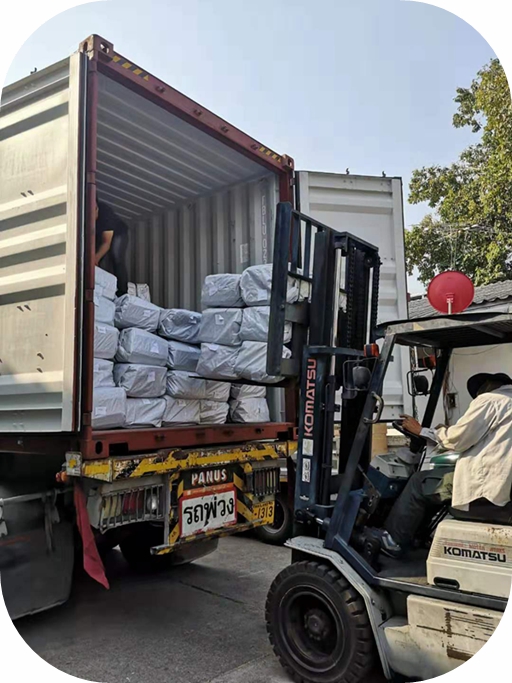
Building material bag, Sand Bag, PP woven sand sack, construction sand bag
Shijiazhuang Boda Plastic Chemical Co., Ltd. , https://www.ppwovenbag-factory.com
